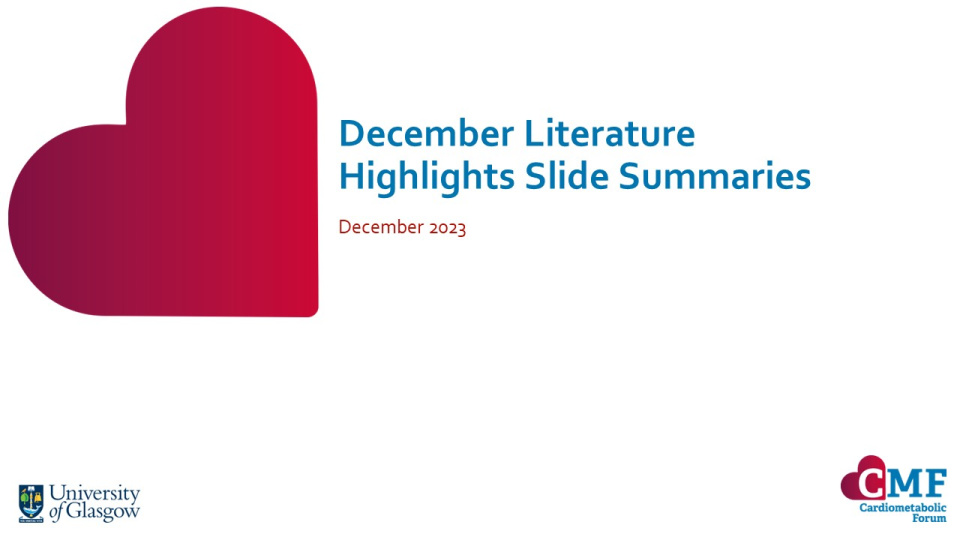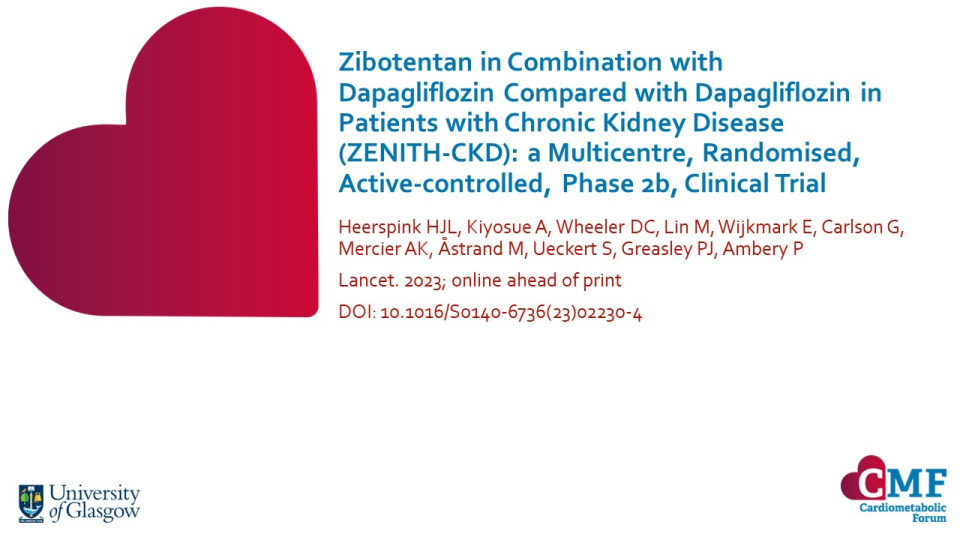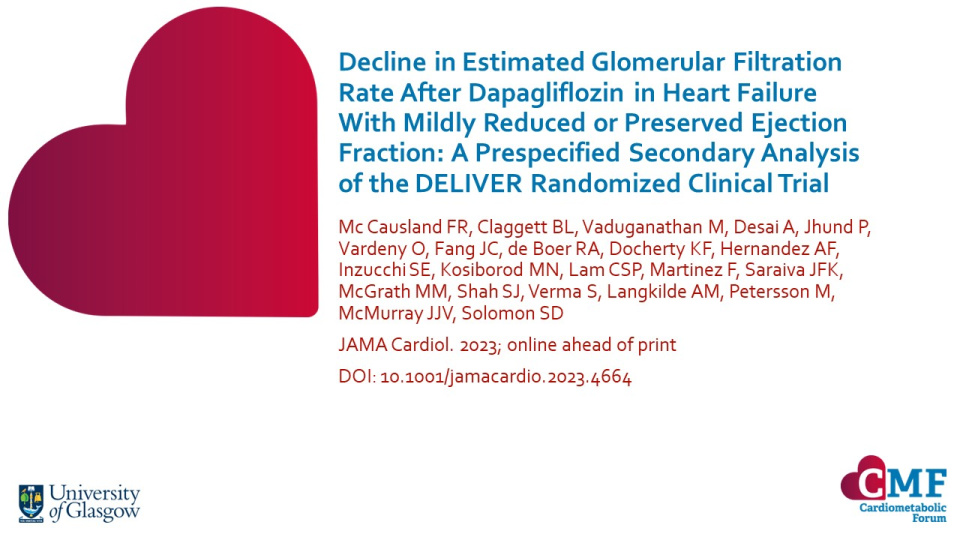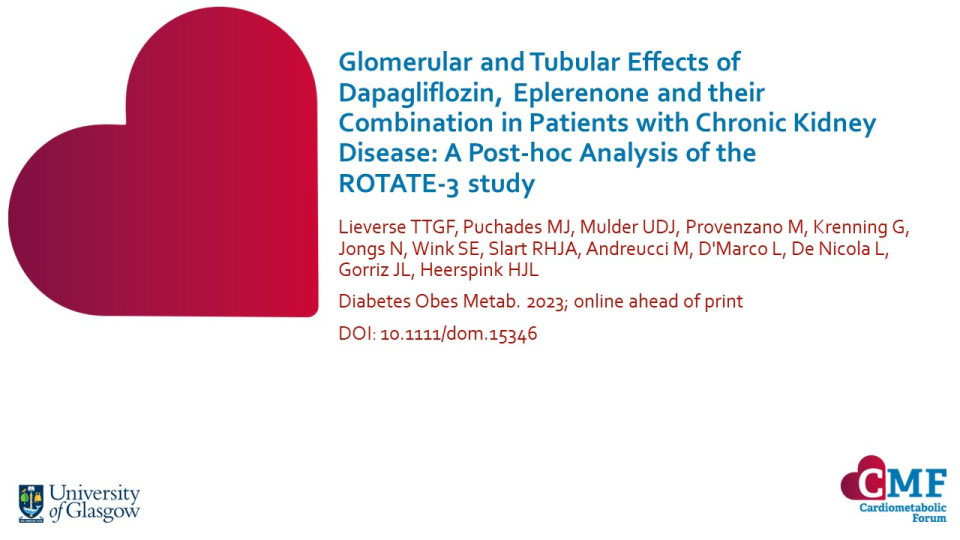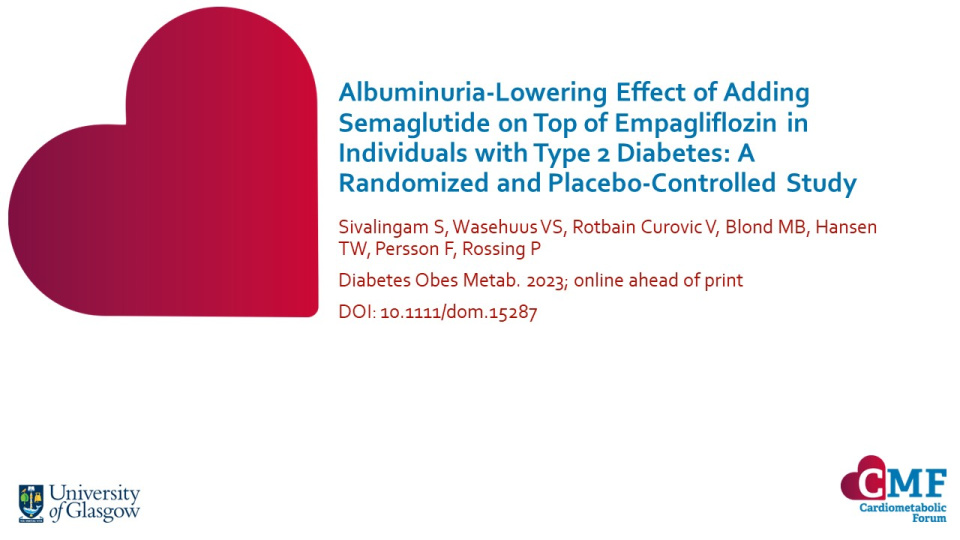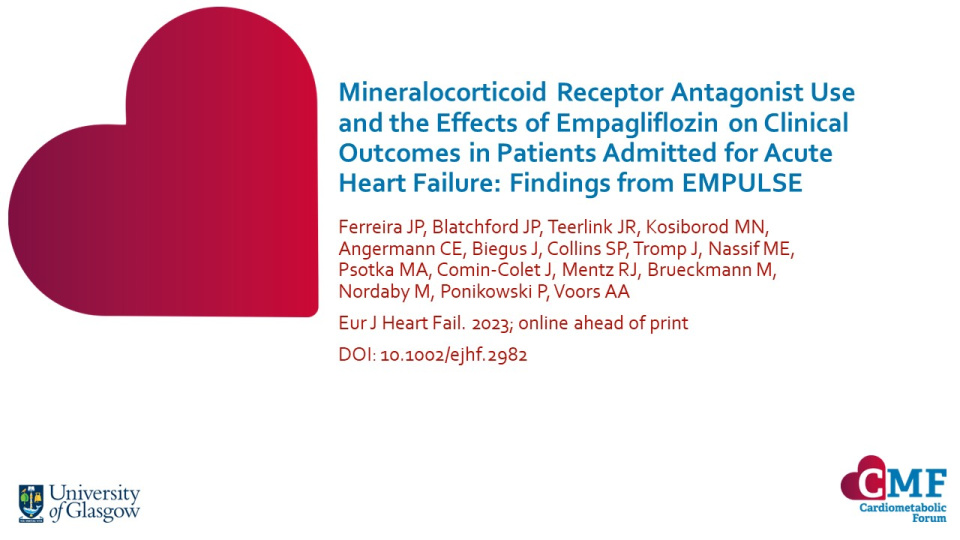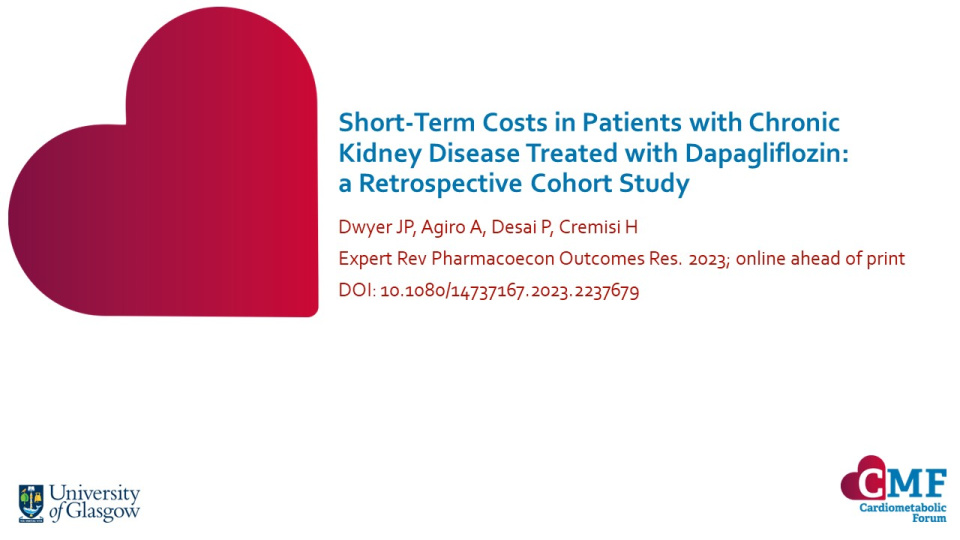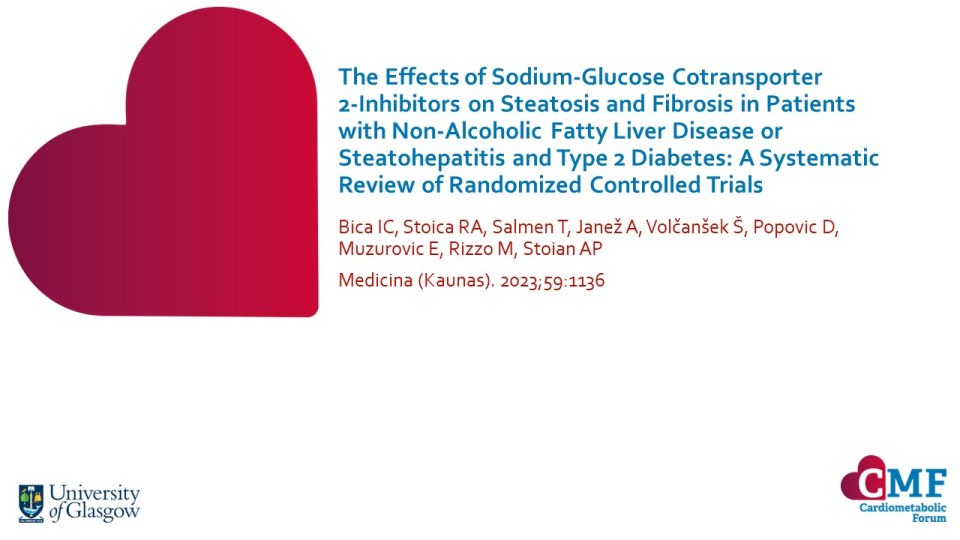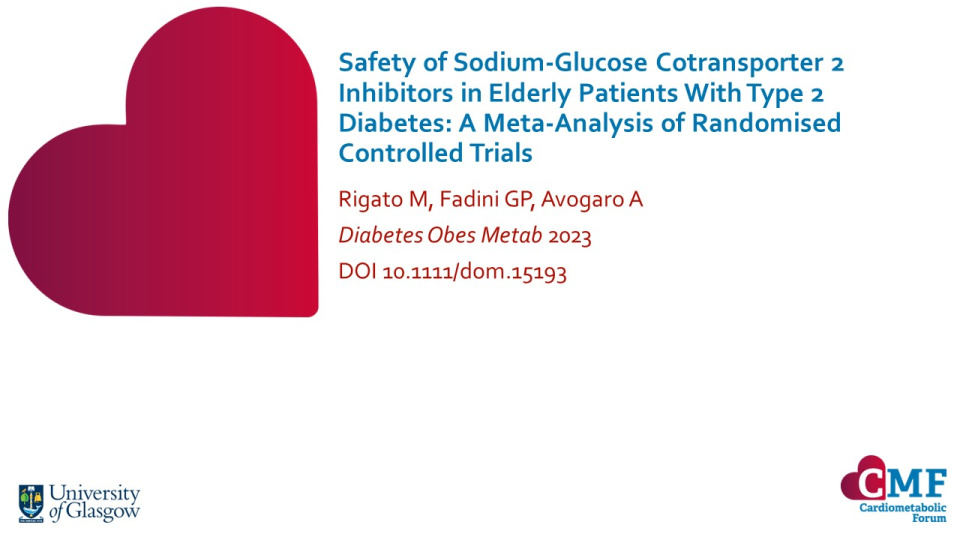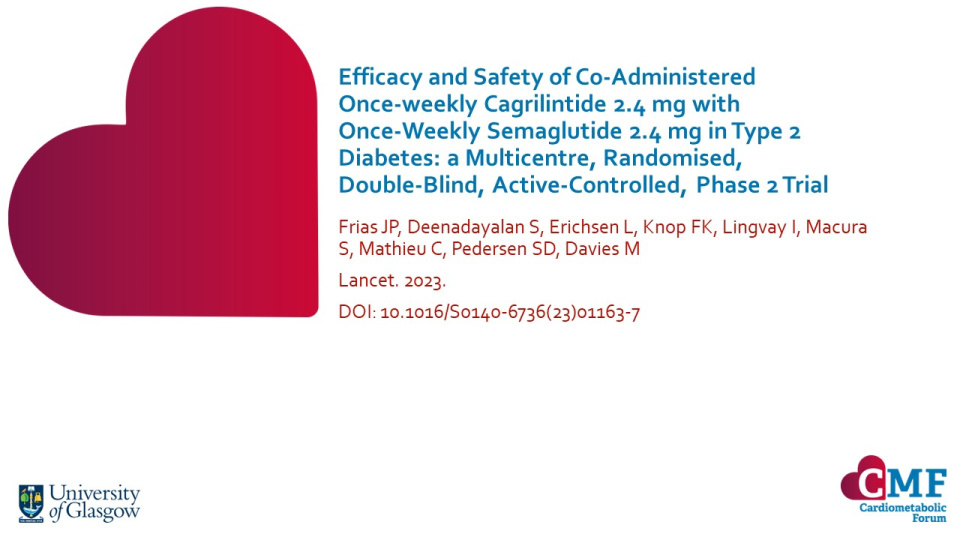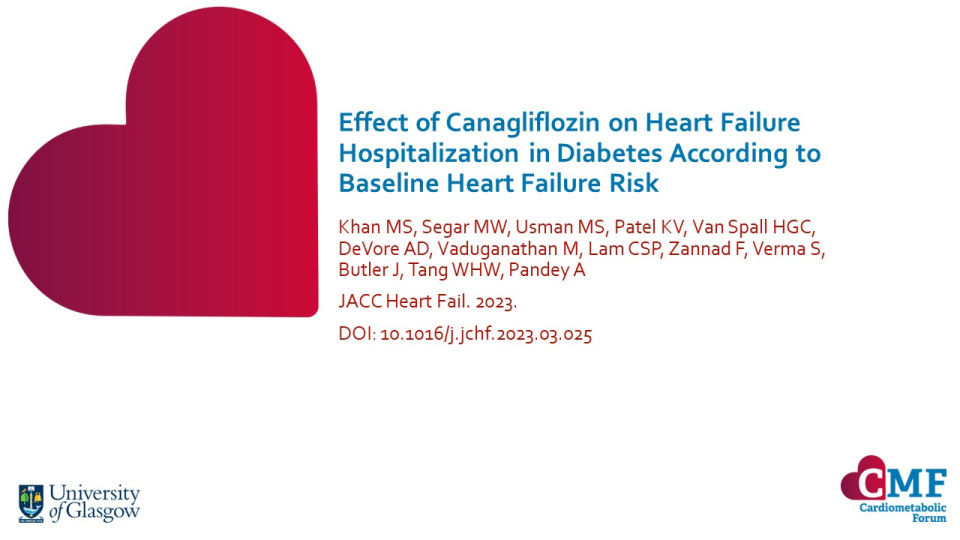Publications
Stay up to date with our literature reviews which are curated by experts to feature the most important publications released each month. Explore our publications for access to concise summary slides for your own use.
Zibotentan in Combination with Dapagliflozin Compared with Dapagliflozin in Patients with Chronic Kidney Disease (ZENITH-CKD): a Multicentre, Randomised, Active-controlled, Phase 2b, Clinical Trial
Lancet. 2023; online ahead of print DOI: 10.1016/S0140-6736(23)02230-4
The risk of kidney failure persists in many patients with CKD, even when receiving optimal treatment including SGLT2i. Increased expression of endothelin-1 may contribute to CKD progression through several pathophysiological effects; however, high doses of non-selective endothelin receptor antagonists (ERAs) have been linked with fluid retention.
Keywords:
Decline in Estimated Glomerular Filtration Rate After Dapagliflozin in Heart Failure With Mildly Reduced or Preserved Ejection Fraction: A Prespecified Secondary Analysis of the DELIVER Randomized Clinical Trial
JAMA Cardiol. 2023; online ahead of print DOI: 10.1001/jamacardio.2023.4664
An initial decline in eGFR often occurs after initiating a SGLT2i and has been observed in patients with diabetes, CKD and HF. A prespecified analysis of DELIVER evaluated the magnitude and frequency of an initial decline in eGFR (within the first month) and its association with CV and renal outcomes in 5,788 patients with HFpEF or HFmrEF.
Keywords:
Glomerular and Tubular Effects of Dapagliflozin, Eplerenone and their Combination in Patients with Chronic Kidney Disease: A Post-hoc Analysis of the ROTATE-3 Study
Diabetes Obes Metab. 2023; online ahead of print DOI: 10.1111/dom.15346
The ROTATE-3 cross-over trial in 46 adults with CKD and urinary albumin excretion ≥100 mg/24 h showed that dapagliflozin combined with eplerenone led to robust additive reductions in albuminuria compared with either agent alone. This post-hoc analysis aimed to characterise the effects of dapagliflozin, eplerenone and the combination on markers of glomerular and tubular function to better understand the mechanisms responsible for albuminuria lowering.
Keywords:
Albuminuria-Lowering Effect of Adding Semaglutide on Top of Empagliflozin in Individuals with Type 2 Diabetes: A Randomized and Placebo-Controlled Study
Diabetes Obes Metab. 2023; online ahead of print DOI: 10.1111/dom.15287
The proposed different mechanisms of SGLT2i and GLP-1RAs indicate that combination therapy may have additive or synergistic effects on the kidneys. This placebo-controlled, double-blind, parallel-group study investigated the effect on albuminuria of adding semaglutide to ongoing treatment with empagliflozin compared with empagliflozin alone in 60 individuals with T2D and albuminuria.
Keywords:
Mineralocorticoid Receptor Antagonist Use and the Effects of Empagliflozin on Clinical Outcomes in Patients Admitted for Acute Heart Failure: Findings from EMPULSE
Eur J Heart Fail. 2023; online ahead of print DOI: 10.1002/ejhf.2982
In the EMPULSE trial, empagliflozin produced greater clinical benefit than placebo in patients hospitalised for AHF. Although many patients with AHF are treated with MRAs, the interplay between empagliflozin and MRAs in AHF has not been explored. A post-hoc analysis of the EMPULSE trial aimed to evaluate the efficacy and safety of empagliflozin versus placebo according to MRA use at baseline.
Keywords:
Short-Term Costs in Patients with Chronic Kidney Disease Treated with Dapagliflozin: a Retrospective Cohort Study
Expert Rev Pharmacoecon Outcomes Res. 2023; online ahead of print DOI: 10.1080/14737167.2023.2237679
Analyses have found that dapagliflozin is cost-effective in the long term in patients with non-diabetic CKD and in patients with CKD with or without T2D. The slowing of eGFR decline and the early reduction in HF hospitalisation seen with dapagliflozin suggest that there is potential for short-term cost benefits in patients with CKD; however, there is a lack of real-world evidence. This retrospective observational cohort study described the impact of dapagliflozin on short-term medical costs in propensity matched patients with stage 3 CKD.
Keywords:
The Effects of Sodium-Glucose Cotransporter 2-Inhibitors on Steatosis and Fibrosis in Patients with Non-Alcoholic Fatty Liver Disease or Steatohepatitis and Type 2 Diabetes: A Systematic Review of Randomized Controlled Trials
Medicina (Kaunas). 2023;59:1136 DOI: 10.3390/medicina59061136
T2D and NAFLD/NASH share common causal pathways. As a class of glucose-lowering agents with well-established cardiovascular benefits, SGLT2i have been studied for effects on steatosis and fibrosis in patients with NAFLD or NASH. A systematic review was conducted to examine the efficacy of SGLT2i on NAFLD/NASH in patients who also had T2D.
Keywords:
Safety of Sodium-Glucose Cotransporter 2 Inhibitors in Elderly Patients with Type 2 Diabetes: A Meta-Analysis of Randomised Controlled Trials
Diabetes Obes Metab 2023 DOI 10.1111/dom.15193
SGLT2is are effective in preventing adverse outcomes of heart failure and chronic kidney disease, which are highly prevalent in the elderly. While SGLT2is are generally well tolerated, elderly patients may be more susceptible to developing AEs reported with this class of drug, such as infections, fracture, and AKI. Clinical experience with SGLT2is in the elderly and very elderly is limited.
Efficacy and Safety of Co-Administered Once-weekly Cagrilintide 2.4 mg with Once-Weekly Semaglutide 2.4 mg in Type 2 Diabetes: a Multicentre, Randomised, Double-Blind, Active-Controlled, Phase 2 Trial
Lancet. 2023. DOI: 10.1016/ S0140-6736(23)01163-7
Combining the GLP-1 RA semaglutide with the long-acting amylin analogue cagrilintide has been shown to have weight-loss benefits. However, the impact of the combination of cagrilintide and semaglutide (CagriSema) on HbA1c is unknown. In a 32-week, double-blind, phase 2 trial, 92 adults with T2D and a BMI ≥27 kg/m2 on metformin, with or without an SGLT2i, were randomised to once-weekly subcutaneous CagriSema, semaglutide or cagrilintide (all escalated to 2.4 mg).
Effect of Canagliflozin on Heart Failure Hospitalization in Diabetes According to Baseline Heart Failure Risk
JACC Heart Fail. 2023. DOI: 10.1016/j.jchf.2023.03.025
In the CANVAS programme, canagliflozin reduced the risk of HF hospitalisation among individuals with T2D. This post hoc analysis evaluated heterogeneity in the treatment effects of canagliflozin on HF hospitalisation according to baseline HF risk as assessed by two diabetes-specific HF risk scores: WATCH-DM (for participants without prevalent HF) and TRS-HFDM (all participants).

